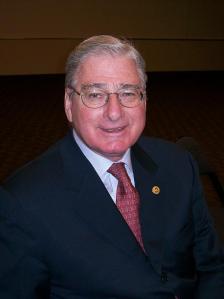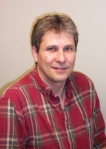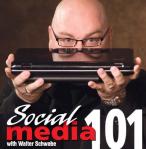
Dr. Margaret Ann Armour with Anne McLellan
Challenging the norm
For Dr. Margaret-Ann Armour, the launch of the WinSETT Centre is a dream come true.
It’s been six years in the gestation. And, true to her roots as a chemist, she birthed the new entity with a flurry of beakers and bubbling gases in front of an appreciative crowd at the Telus Centre on the University campus.
Dr. Armour has long been known for her tireless efforts to engage and promote women in the sciences and technologies. Back in the early 1980s, she was a founding member of WISEST—Women in Scholarship, Engineering, Science and Technology. The movement spread across the country.
Now, through her efforts and vision, Edmonton is home to the WinSETT Centre. An acronym for Women in Science, Engineering, Trades and Technology, this is the hub for an ambitious national effort to significantly boost the numbers of women in the workforce and change the culture of such fields as engineering and trades.
Dr. Armour points to the statistics. “Only 12 percent of engineers are women. The kind of percentages of women in construction is dismal. It’s four percent. In the sciences, it’s probably 35 percent, which is over the critical mass which makes it sustainable.”
Research shows that one major problem is that even when women do enter these fields, they tend to leave after about 10 years. The blame lies directly with an inflexible male dominated culture in the workplace.
“An awful lot of it has to do with having a family and being able work, and trying to balance the two, says Dr. Armour. “Because, if it’s a work place which is still fairly well male dominated, it has a male culture. And the male culture is, ‘you shall work 18 hours a day and always be there.’
“And women are saying, ‘I don’t want that. I don’t want that kind of lifestyle. I want a balance.’ We’re hearing that young men are saying, ‘We want a balance, too.’ So we’re hoping that things will change. But that’s been very slow.”
That theme of changing the workplace culture to retain women and improve Canadian productivity was picked by the Honourable Anne McLellan in her stunning speech at the WinSETT launch.
Among the first programs the WinSETT Centre will undertake is leadership training. According Dr. Armour, “Leaders need to appoint leaders. And, although we know it’s very important to have more women entering fields like engineering, if we don’t have women as leaders in engineering, the culture of engineering is not going to change. So when young women come into the workforce, they’re not going to stay.” √

Robin Winsor CEO of Cybera
Expanding the cyber network
The new president and CEO of Cybera is Robin Winsor. He will split his time between Edmonton and Calgary as he runs this not-for profit, university based organization set up to extend Alberta’s cyber infrastructure. His mandate is to move Cybera to the next level—into the business community.
That’s certainly a world Winsor understands. While working in the research department at Gulf, he used his knowledge of geophysics and artificial intelligence to develop the world’s first direct digital x-ray system. That was 20 years ago. He quit the day job and grew the company into a business worth hundreds of millions of dollars.
Now, as the head of Cybera, Winsor hopes to extend the services of the cyber network to Alberta’s entrepreneurs and business community. Cybera operates cyber ports at the University of Alberta. “There are similar facilities in Calgary, Lethbridge and, by extension, through networking all over the world,” he says. “We have lots of big screen TVs. We have cameras that track us and we can sit here and have a virtual meeting. You can see so much more when you are in what we would basically call a video conference. Others are giving it fancier names like tele-presence, virtual rooms, and so on, but it does add that extra measure. And this is just a small part of the services that Cybera offers.”
Winsor is particularly keen on making Alberta’s energy sector aware of the Cybera and the use it can make of the cyber facilities.
While current access to this cyber network is somewhat limited, he says Cybera’s future goal is make access as pervasive and ubiquitous as that of the telephone. Simply plug in and you’re connected.
You can learn more about Cybera’s services at www.cybera.ca √

Dr. Stefan Bachu
Recognizing excellence
Just before the Alberta Research Council was merged into the new agency, Alberta Innovates-Technology Solutions, its president and CEO John McDougall honoured one of his own. He bestowed the title of Distinguished Scientist upon Dr. Stefan Bachu—the fifth ARC scientist to receive this recognition of excellence.
Dr. Bachu is world renowned for his pioneering research on carbon capture and storage technology. In 2007, he shared a Nobel Prize as lead author to the Intergovernmental Panel on Climate Change (IPCC) Special Report on CO2 Capture and Storage. That’s the same Nobel Prize Al Gore received.
Today, Dr. Bachu continues his involvement at the international level. “To start with, I represent Canada on the technical group of the Carbon Sequestration Leadership Forum, which is an organization of 24 countries major energy producers and CO2 emitters. It includes countries like United States, China, Brazil, Russia, United Kingdom, Norway, Australia, and so on. Secondly, I have been asked several times to give advice to various state or local governments in various countries. So yes, I am involved.”
As a distinguished scientist, Dr. Bachu intends to continue his research into the refinement of carbon storage technology. √

Jim Edwards
Kick-starting industry research
When it comes to funding university research, one of the main granting agencies is NSERC, the Natural Sciences and Engineering Research Council of Canada.
And now the Council is making more money available to encourage research partnerships between academia and industry.
Former Member of Parliament and long time Edmontonian, the Honourable Jim Edwards, is now chair of NSERC. He explains the particular focus on small and medium-size business.
“It’s a fact that 60 percent of the 100 largest companies in Canada use NSERC collaborations, but only seven percent of the smaller companies do… we’re seeking to fill that gap. Ultimately the goal is to improve Canada’s competitiveness. We invest more in academic-based research per capita than any other country in the G7. On the other hand, we trail very badly in terms of industry-based research. And so, we’re hoping, in a modest way, to be able to kick start that and we’re hoping to double the number of partnerships that exist within the next five years.”
To learn more about the NSERC industry program, visit www.NSERCPartnerships.ca √
Capitalizing on datasets

Dr. Osmar Zian
With news that its funding has been renewed, the Alberta Ingenuity Centre for Machine Learning is launching into its second phase. Its scientific director, Dr. Osmar Zian, says phase two brings some new directions.
One is commercialization. The other is a major focus on biomedical applications for the machine learning and data mining technology the Centre is developing.
Says Dr. Zian, “We have applications related to cancer… It can be detecting cancer. It can be providing decision support for practitioners on the treatment or the dosage we give to patients. Predicting, for example, relapse for people. But there are other examples where we will also build data warehouses to collect data from different sources and provide decision support systems that are using machine learning and data mining techniques for decision-makers, There are techniques also that we are working on for visualization of medical images. The list goes on and on. “

Robert Murakami
For Dr Zian, turning this research into tools that can help save lives is what the new commercialization component is all about. And the man who is charged with making that a reality is Robert Murakami, the Centre’s new executive director. He’s also the president and CEO of its new commercialization arm, a company called Myriad Machine Learning. It’s his job to bring researchers and investors together to help translate the science into industrial applications.
As Murakami explains, “Machine learning is really a platform technology. It is the fundamental engine for analyzing and predicting large datasets, much like predicting new investment strategies, or new trading tools for investment management… much like predicting patient movement and predictability within a hospital environment… much like predicting whether or not the existing oil wells in this province are actually being managed efficiently. And so, because it’s such a platform technology and because we know that information technology is growing at an enormous rate—and we now have a gazillion, gazillion bits of information floating around—how does all that get analyzed and how can we actually utilize it to create something better for people?”
Through Myriad and the Alberta Ingenuity Centre for Machine Learning, Murakami is also setting the stage for the next generation of technology entrepreneurs, including a program that offers business bootcamps to university students. √

Dr. Norm Neumann
Zoning in with ozone
When it comes to prion research, decontamination is a huge issue. The misfolded prions that cause mad cow and chronic wasting disease are almost indestructible by traditional means.
But, according to
Dr. Norm Neumann of the
School of Public Health at the
University of Alberta, experiments with advanced oxidation and ozone treatment may hold some promise. “The pathological disease, as we know it, is caused by a misfolded protein causing another normal protein to misfold. And so there’s this chain reaction that goes on. Some of the work that we’re doing demonstrates that ozone can actually destroy that protein enough to inactivate the templating properties or the pathological process that we see.
“We’ve seen that in a test tube—and the big question for us now is can we begin to understand this and model it in an engineering context and understand complete destruction of this? Then we must cross validate that information in animal infectivity models.”
Dr. Neumann suggests that, if the advanced ozone treatment works, we may one day be able to dispose of prion infected material through something as simple as composting. √
















Recent Comments